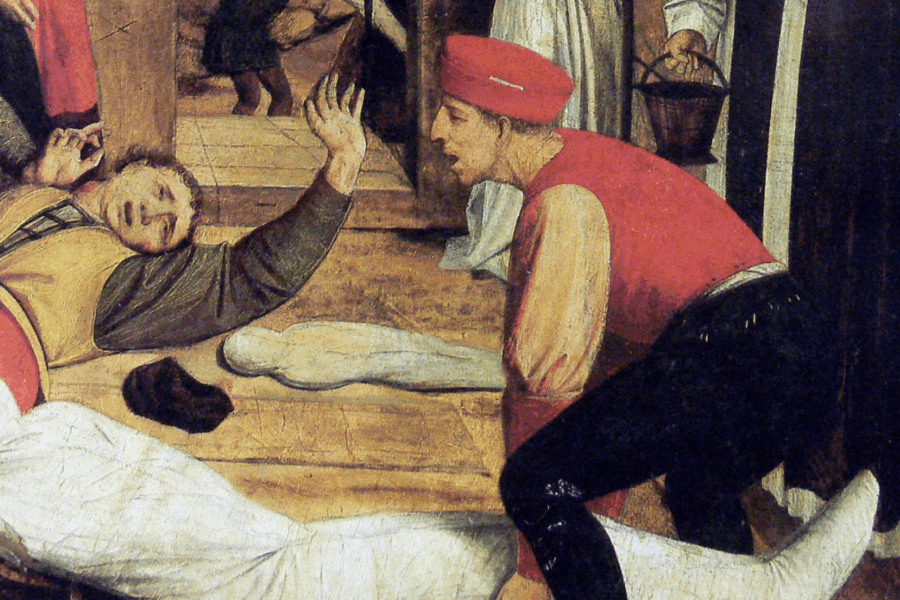History.com The Plague of Justinian peaked in the year 542 and lasted for two centuries, contributing to the fall of the Roman Empire. The Plague of Justinian in the sixth century was one of the worst of times. “Now the disease spread over the whole world, sparing neither sex nor age nor making any distinction either in respect of rank or of any other quality; for all alike were attacked, whether they lived in luxury or in poverty,” wrote the Byzantine historian Procopius of Caesarea, who lived through it. “It was not possible to calculate the number of the dead, for no one could count them, nor was it possible to bury them all. Many were cast into the sea, and many lay unburied in the streets and in the houses… Whole cities were left desolate, and the plague did not cease until it had destroyed almost all the inhabitants of the world.”
According to Procopius, 10,000 people a day died at Constantinople during the peak of the outbreak in A.D. 542. Modern historians estimate up to a quarter-million people died in the imperial capital, while more than 10 million died throughout the Byzantine Empire. But the Plague of Justinian—named after the emperor Justinian I—did not stop at the empire’s borders. It continued for more than 200 years in other parts of Europe, North Africa and the East, with a global death toll estimated at tens of millions.
